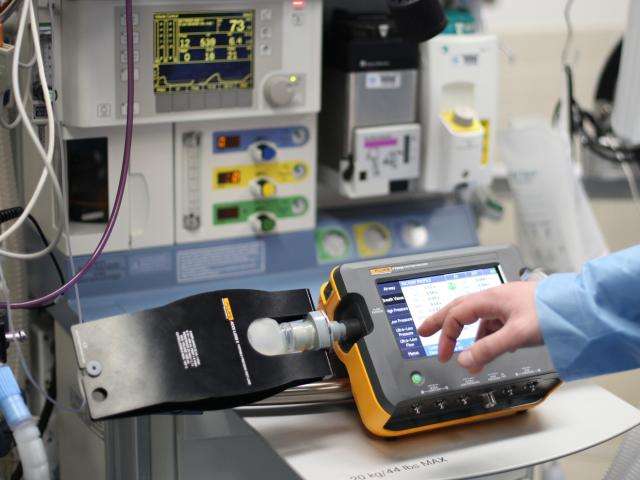In the realm of medical equipment maintenance, ensuring accurate and reliable performance is paramount. Defibrillators, critical life-saving devices, must undergo meticulous calibration to guarantee their efficacy during emergencies. Understanding the intricacies of defibrillator analyzer calibration is indispensable for biomedical engineers, technicians, and healthcare professionals. This article delves into comprehensive tips and insights to elevate your skills in defibrillator analyzer calibration.

Introduction to Defibrillator Analyzer Calibration
Defibrillator analyzer calibration is a fundamental aspect of biomedical equipment maintenance. Calibration involves adjusting and verifying the accuracy of equipment to meet predefined standards. In the context of defibrillators, calibration ensures that these devices deliver precise electrical outputs during cardiac resuscitation procedures. A defibrillator analyzer is a specialized tool used to assess the performance of defibrillators, including energy delivery, waveform analysis, and synchronization capabilities.
Understanding Defibrillator Analyzer Calibration
Calibration of defibrillator analyzers follows a systematic process to ensure optimal performance. Technicians meticulously check various parameters, including energy output, waveform shape, and synchronization accuracy. This process involves connecting the analyzer to the defibrillator and running a series of tests to validate its functionality.
Tips for Successful Calibration
To achieve successful calibration results, thorough preparation is key. Technicians must ensure that the environment is conducive to accurate testing and that all necessary equipment is available. During calibration, following the prescribed procedures diligently is crucial. Additionally, technicians should be aware of common mistakes that can compromise calibration accuracy, such as improper electrode placement or insufficient device warm-up time.
Importance of Regular Calibration
Regular calibration of defibrillator analyzers is essential to maintain accuracy and compliance with regulatory standards. Calibration ensures that the device performs within acceptable tolerances, minimizing the risk of erroneous readings during critical medical procedures. Furthermore, routine calibration can extend the lifespan of the equipment by identifying potential issues early and facilitating timely repairs.
Choosing the Right Calibration Equipment
Selecting appropriate calibration equipment is paramount to achieving accurate results. Factors such as compatibility with defibrillator models, calibration standards, and ease of use should be considered. Popular calibration tools in the market offer a range of features, including automated testing protocols and comprehensive data analysis capabilities.
Troubleshooting Calibration Issues
Despite meticulous calibration procedures, technicians may encounter calibration errors or inconsistencies. Identifying common problems, such as electrode degradation or software malfunctions, is essential for troubleshooting. Implementing systematic troubleshooting steps can help resolve calibration issues promptly, minimizing downtime and ensuring uninterrupted device functionality.
Best Practices for Maintenance
In addition to calibration, proper maintenance practices are essential to prolonging the lifespan of defibrillator analyzers. Regular cleaning and inspection help prevent contamination and identify potential defects early. Proper storage in a controlled environment further protects the equipment from damage and ensures optimal performance when needed.
Training and Certification
Proficiency in defibrillator analyzer calibration requires specialized training and certification. Healthcare facilities should invest in training programs to ensure that personnel possess the necessary skills and knowledge to perform calibration tasks accurately. Certification programs provide validation of competency and compliance with industry standards.
Future Trends in Defibrillator Analyzer Calibration
Advancements in technology are shaping the future of defibrillator analyzer calibration. Innovations such as remote monitoring capabilities and artificial intelligence-driven diagnostics promise to streamline calibration processes and enhance efficiency. Automation of calibration tasks will enable quicker turnaround times and reduce the burden on technicians, paving the way for more comprehensive device management strategies.
Conclusion
Defibrillator analyzer calibration is a critical aspect of biomedical equipment maintenance, ensuring the accuracy and reliability of life-saving devices. By following best practices and staying abreast of technological advancements, biomedical professionals can elevate their skills and contribute to the safe and effective use of defibrillators in healthcare settings.
Frequency and Questions:
Why is defibrillator analyzer calibration necessary?
Defibrillator analyzer calibration ensures the accuracy of device performance, critical for reliable cardiac resuscitation procedures.
How often should defibrillator analyzers be calibrated?
Calibration frequency varies depending on usage and manufacturer recommendations but typically occurs annually or biannually.
Can calibration be performed in-house, or is professional service required?
While in-house calibration is feasible with proper training and equipment, some facilities opt for professional calibration services for added convenience and expertise.
What are the consequences of neglecting defibrillator analyzer calibration?
Neglecting calibration can lead to inaccurate readings, potentially compromising patient safety and violating regulatory standards.
Are there regulatory requirements for defibrillator analyzer calibration?
Regulatory agencies such as the FDA and AAMI provide guidelines and standards for defibrillator analyzer calibration to ensure device safety and efficacy.